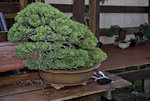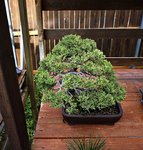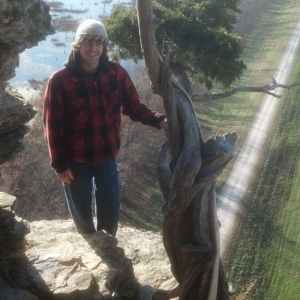Cable
Omono
It's threads like this, and then we wonder why the whole world thinks bonsai folks are f***ing crazy.
I told my trees you said that and they all laughed.
It's threads like this, and then we wonder why the whole world thinks bonsai folks are f***ing crazy.
I submitted my evidence to a reputable body and received peer review
Adair, I have seen these same specimens and wonder if the scale I observed as well was an age thing. The die back on some of these trees is so extreme and internal budding was not observed. What I am asking is that these trees don't live forever, are they displaying the final stages of spiraling down in health?Here are pictures taken at Plant City’s famous “Sea of Junipers”:
View attachment 269702
View attachment 269701
And some close ups:
View attachment 269700
View attachment 269699
View attachment 269698
A rough guess says that about half of them have fully gone scale, about a third have both types of foliage, and the rest are straight juvenile.
It's threads like this, and then we wonder why the whole world thinks bonsai folks are f***ing crazy.
Nah, as a rule, junipers produce juvenile foliage in a time of stress while the opposite is true for scale foliage. Scale foliage on a juniper is not a sign of declining health.Adair, I have seen these same specimens and wonder if the scale I observed as well was an age thing. The die back on some of these trees is so extreme and internal budding was not observed. What I am asking is that these trees don't live forever, are they displaying the final stages of spiraling down in health?
The die back you see with these is the internal foliage that’s been shaded out.Adair, I have seen these same specimens and wonder if the scale I observed as well was an age thing. The die back on some of these trees is so extreme and internal budding was not observed. What I am asking is that these trees don't live forever, are they displaying the final stages of spiraling down in health?
Post #104Juniperus procumbens its in the section sabina related to juniperus chinensis and most of scale junipers so its not very crazy that some specimens have some scales even in the nana cultivar suposed to only have juvenile growth


"The leaves are arranged in decussate whorls of three. The leaves are mostly of juvenile form, growing needle-like, individually measuring 0.24 to 0.32 inch (6 – 8 mm) long and 0.04 to 0.06 inch (1 - 1.5 mm) broad, with two white stomatal bands on the inner face. Occasionally one will find adult (scaled foliage), particularly on potted specimens." Conifer society, Juniperus procumbens


That’s a really good video on how to prune and style junipers.I don't know if you saw earlier in the thread, but someone here contacted that site to change the definition. To be clear I am firmly in the "procumbens throw scale foliage" camp as some of mine have mature foliage, but I do wonder if there is some credence to the theory that we are dealing with different cultivars. I saw a video on a different thread where someone is working on a Sonare, which to my understanding is what the Japanese call Procumbens. To me the foliage on the tree in the video looked quite different than my procumbens:It appears more stringy and delicate.


If only there was a technique to make them go to scale reliablyOnly thing I guess you can say for sure is that some do and some don't. At my place they all do, not that I have very many but the few I do have, have all turned scale foliage and not after a number of long years, not from being dried out or over watered, and not from being pot bound as I repot my trees every year if they need it. The trees below I have had in my collection since 2002 and went scale after only a few yrs and stayed that way ever since. yes they are procumbens and no they weren't mislabeled. I guess there will be believers and there will be non believers and nothing will convince the latter no matter what. :-(View attachment 273309
View attachment 273310
I like the needle foliage too.You probably call me crazy but I actually like the needle foliage junipers like procumbens or communis, I know many people dont like needle junipers, so if I buy a sonare I will try to get one that not make any scale foliage

Squamata?Most if not all junipers eventually have scale foliage.
